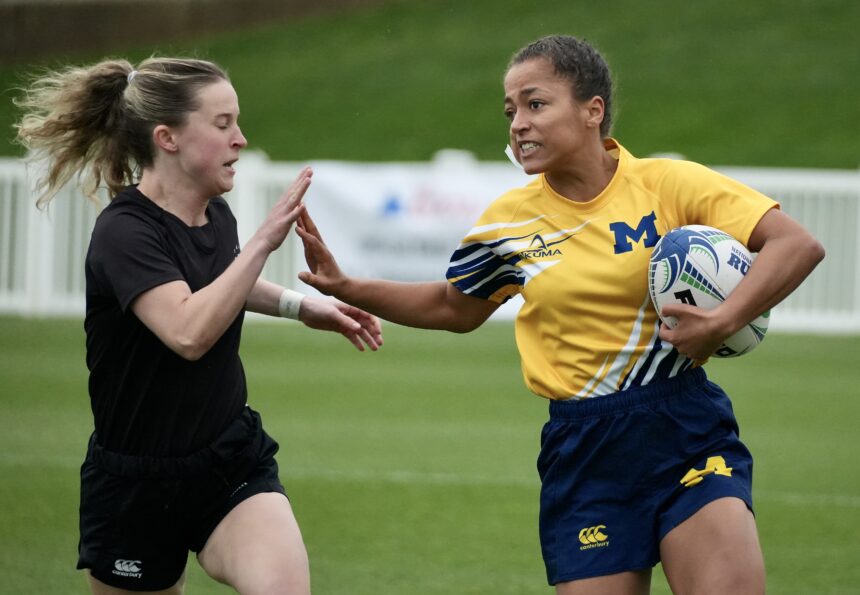When the Collegiate Rugby Championship (CRC) 7s hit its peak during those Chester, Pa., days, the event was a standard-setter for what a professionally run rugby tournament could look like. With that said, the women’s tournament did not have equal billing, or even close. Now, the CRCs are in its National Collegiate Rugby (NCR) era, and that means more than chasing parity. It’s clear that the NCR-driven event wants to be bigger, yet better, and 2024 supported that trajectory.
RELATED: 4 Women’s Champs Crowned at CRCs
The 2024 CRC 7s were held in the same venue as the 2023 championship — Maryland SoccerPlex in Boyds, Md. It’s a beautiful facility full-stop, but it’s also a really convenient layout with all of the exterior playing fields abutting the stadium. To boot, each division had its own pitch for the most part. So if you’re a DII team interested in the rest of the field, you just planted yourself at field 10 all day Saturday and scouted the competition as it rolled through.
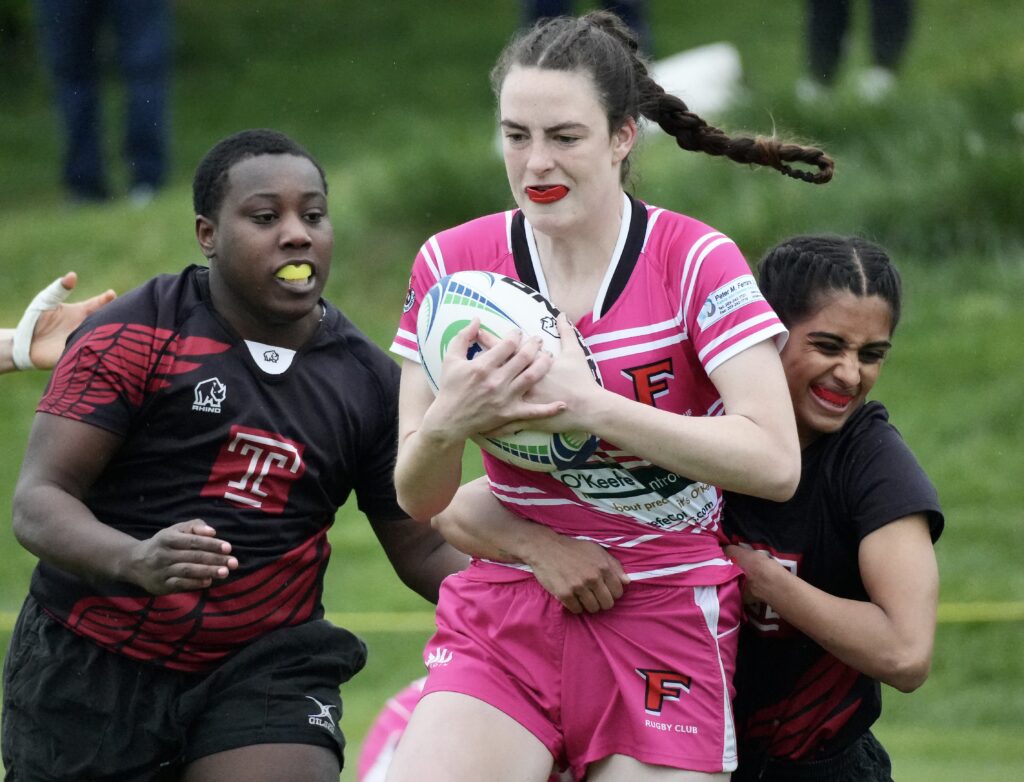
DII’s Fairfield vs. Temple / Photo: Jackie Finlan/TRB
In terms of participating teams, the CRCs’ reach extended farther west this year, and the DI Club final between Claremont Colleges and Univ. Oregon accentuated that fact. There were also more NCAA varsity programs — from three last year to nine in 2024 — and they all competed in the Premier division. It’s worth noting that while, yes, there is an invitational element to the CRCs, most teams are booking spots to the championships by either winning their local conferences, earning at-large berths through those performances and/or attending regional qualifiers for the right to play toward a title.
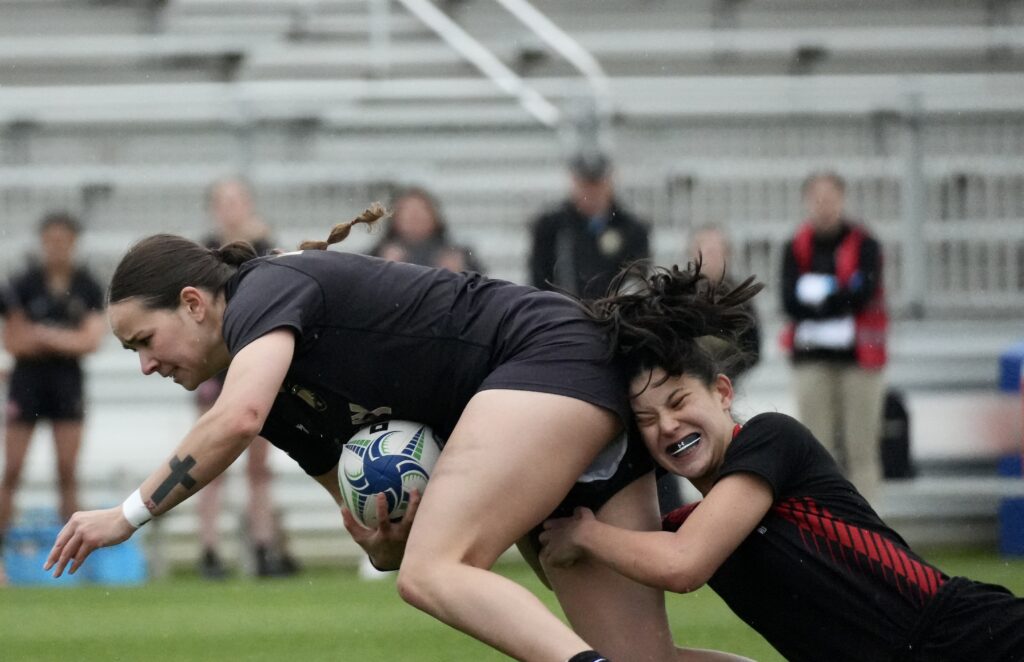
Army vs. Northeastern Rd. 16 match / Photo: Jackie Finlan/TRB
To both accommodate the 144 men’s and women’s teams competing toward eight separate championships, the event expanded to three days and also introduced cascading brackets. It removed the pool play stages that traditionally feature in 7s tournaments. Instead, a loss in the first round meant routing to the Bowl bracket, and then a loss in round two meant flowing into the Shield competition. It injected much more drama and intensity to every game, and also meant that teams played a total of four games — instead of five or six — across two days. This format also means that seedings heading into the tournament are very important, and of the participating teams that did share critiques with TRB, that was the prime point of discussion.
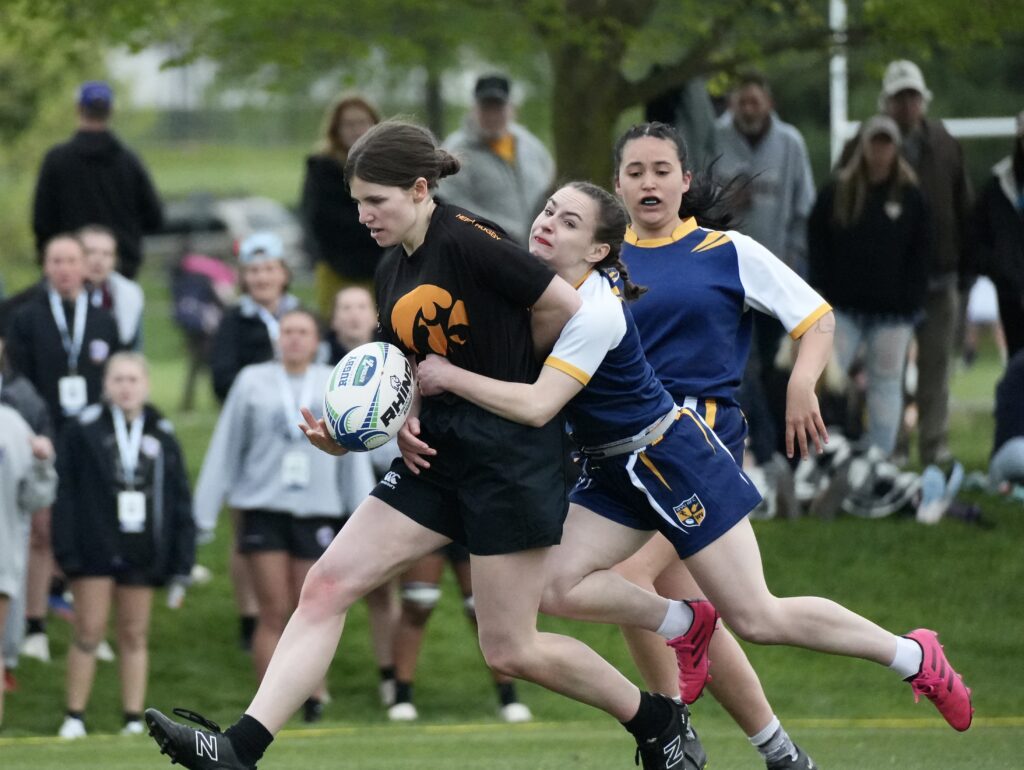
Iowa v West Virginia / Photo: Jackie Finlan / TRB
If you’re not embedded in rugby, and specifically 7s, understanding how teams flow through the competition is confusing. And that’s where NCR’s app was so, so good. Just hands-down the best resource when on the move, looking for results, knowing where you had to be to watch the game you wanted to see. And it wasn’t just scores and easy maneuvering between brackets. The tournament kept player stats that were readily viewable. The stadium announcers were rugby people with rosters and player bios. The effect is one of care and respect for those teams and staffs that did all the things to get to Boyds.
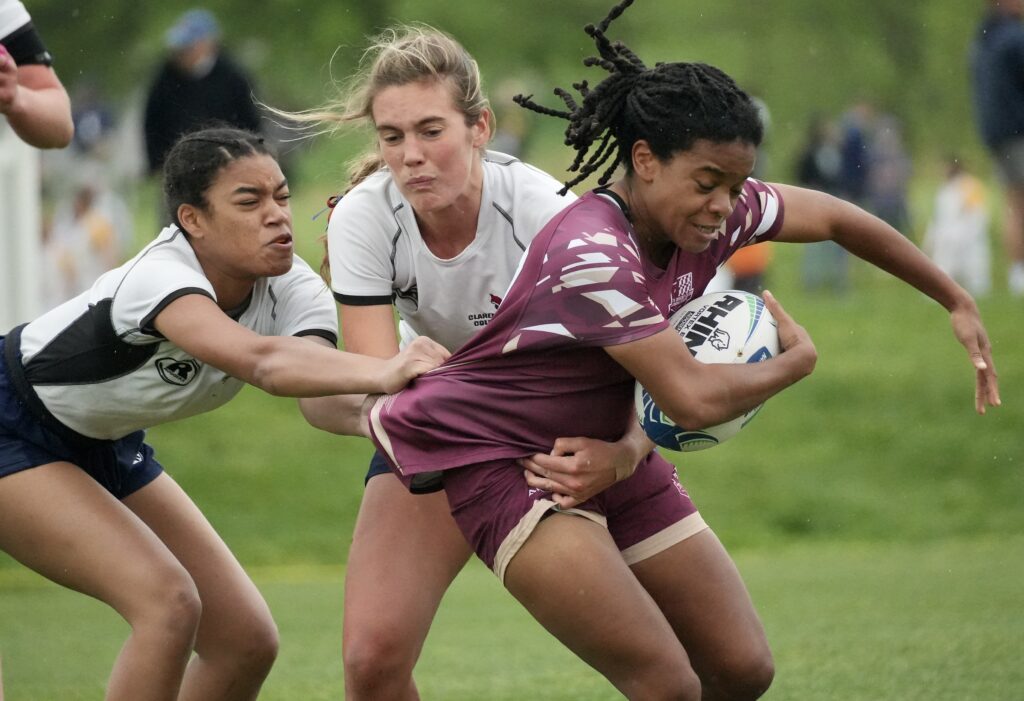
Claremont v Florida State / Photo: Jackie Finlan / TRB
Similarly, NCR and the CRCs do a good job promoting its members and benefits through a solid media machine. In all honesty, the CRCs don’t need The Rugby Breakdown on site, but the fact that it continues to sponsor my trips to their events is so humbling and special.
Looking ahead, one can see where the CRCs want to grow. The modest high school tournament occurred and the West Carroll Mauraders beat the Maryland Valkyries inside the stadium. West Carroll head coach Taylor Schussler was happy to have the local event and hopes to see it build out in the future. The CRCs also launched a Hall of Fame and inducted its inaugural class inside the stadium. KB Broughton and Meya Bizer were on hand to accept their awards, joining Nate Ebner and Rocco Mauer.
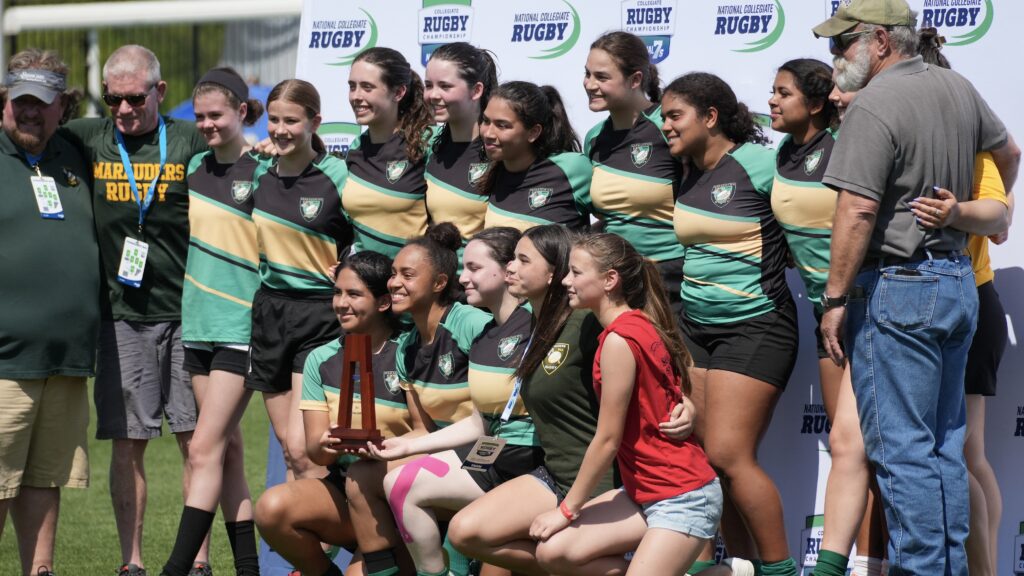
West Carroll Marauders
As for me, my favorite part of big events like the CRCs is the sideline conversations. It’s a chance to put faces to names, and when 64 teams are reporting to one location, that means a lot of handshaking. Those brief interactions also provide so much off-the-record intel! And I’m already stoked for the rugby that’s coming in 2024-25, including the CRCs!


